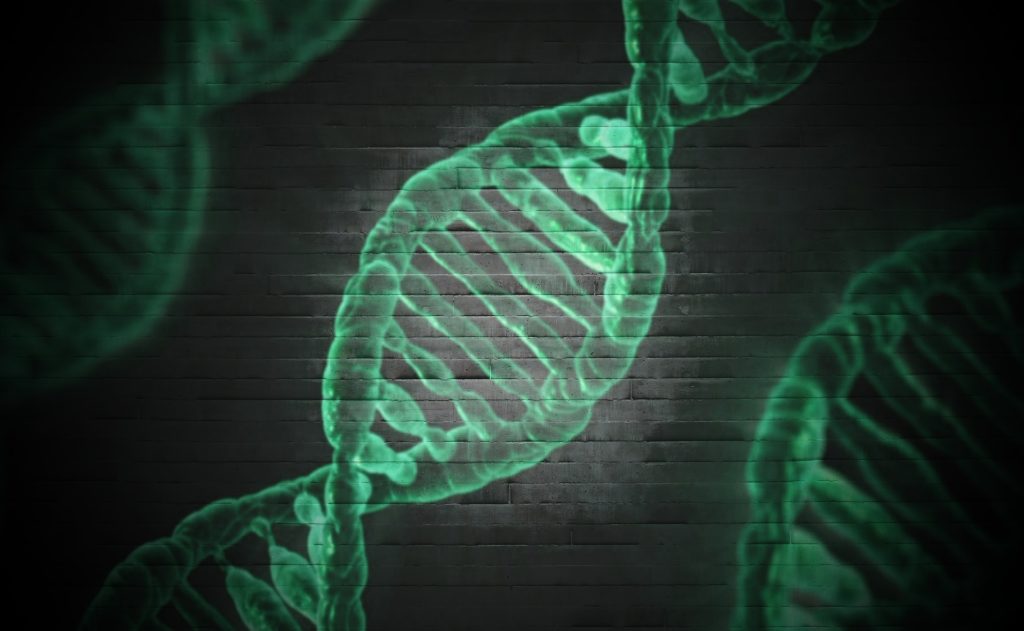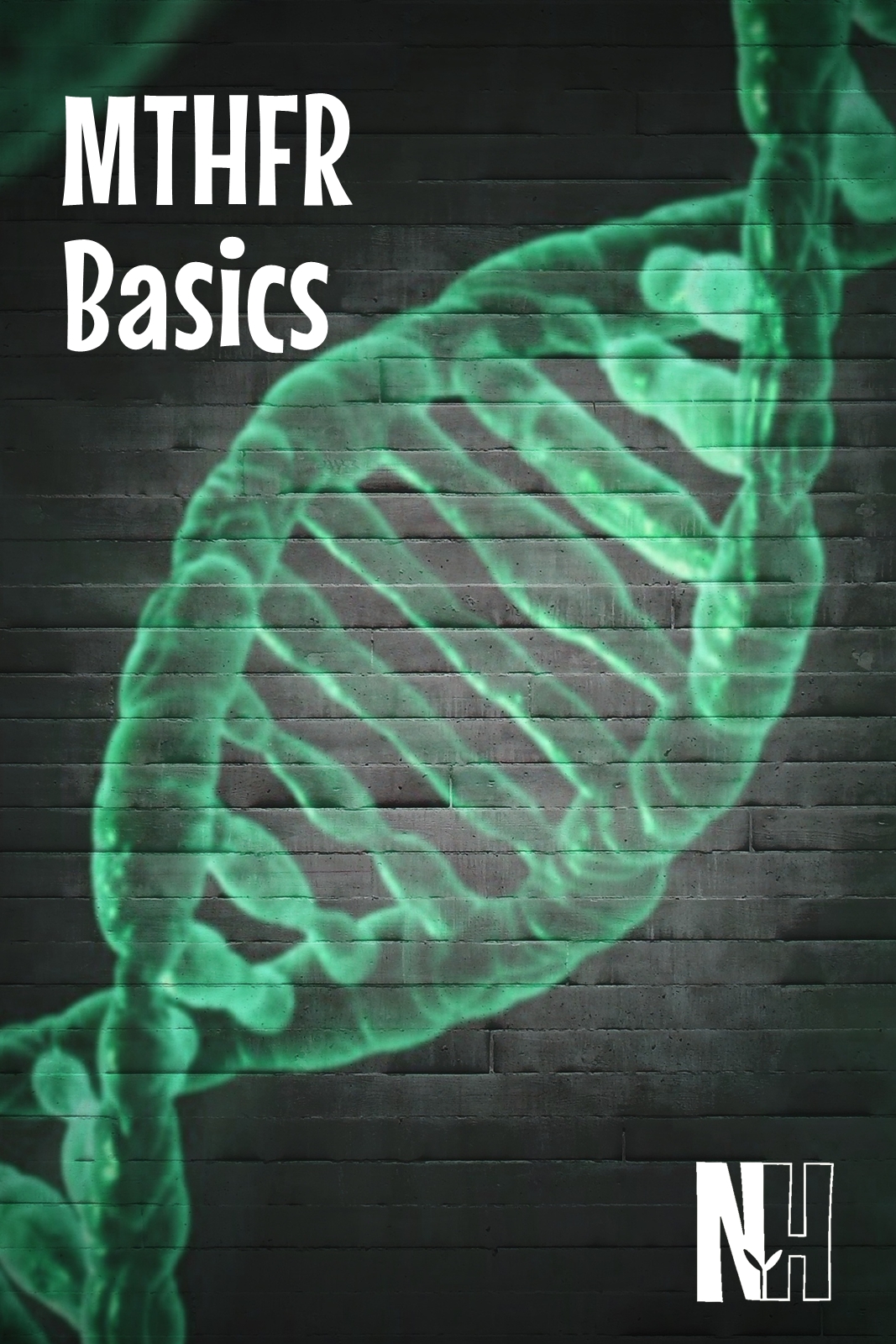MTHFR is a fairly new discovery as far as science and medicine are concerned. As such, there isn’t a ton of research available yet, and there certainly isn’t a lot by way of practical information for everyday people. I want to try to provide some information that’s practical and understandable, but I don’t want this post to get too long, so I’m going to write a series of posts and I’ll come back and link the others here. For now, let’s start with the basics.
What is MTHFR?
MTHFR stands for methylene tetrahydrofolate reductase. That’s quite a mouthful, so you can see why we abbreviate it! Methylene tetrahydrofolate reductase is an enzyme the body uses in a process called “methylation,” which has to do with shuffling certain chemical structures around from substance to substance. This process of methylation is a key part of many important body processes; the two that are most obviously relevant for the average interested reader are the conversion of vitamins (especially folate [B9] and B12) into active forms the body can use, and detoxification.
MTHFR is also the name of the genes that code for this enzyme. There are a number of these genes, but only two are fairly well studied, so they’re the two you’ll hear people talk about when discussing MTHFR. If you have mutations (technically called “polymorphisms”) in one or both of these genes, your body makes less of the MTHFR enzyme than someone without. How much less varies depending on which polymorphism(s). This is not classified as a “disease,” so one cannot technically “have MTHFR” the way one might “have the flu” or “have Cystic Fibrosis”; however “having MTHFR” is often used as a sort of shorthand for “having MTHFR mutations” (which can get a little unwieldy to say!).
More About the MTHFR Genes
The two fairly well-known MTHFR genes are named C677T and A1298C. (There are technical reasons, related to where they’re located on the chromosome, etc.) For each of these genes, you get one copy from your mother and one copy from your father, so it’s possible for each one to have two “good” copies, two “bad” copies, or one “good” and one “bad.”
- If you have one “bad” copy of A1298C, this is called being heterozygous for A1298C. (Think “heterosexual” — hetero means the two copies are different.) This is the mildest form of mutation, and many practitioners believe the reduction in enzyme production is so minimal as to be a variation on normal and nothing to be concerned about.
- If you have two “bad” copies of A1298C, this is called being homozygous for A1298C. (Think “homosexual” — homo means the two copies are the same.) This causes a greater reduction in enzyme production than being heterozygous.
- If you have one “bad” copy of C677T, you’re heterozygous for C677T. This is believed to result in roughly the same enzyme production as being homozygous for A1298C. (No one knows precise numbers, just ballpark ranges.)
- If you have two “bad” copies of C677T, you’re homozygous for C677T. This produces a greater reduction in the enzyme.
- If you have one “bad” copy of A1298C and one “bad” copy of C677T, this is called compound heterozygous. It also results in a greater reduction in the enzyme.
- It is possible to be homozygous for one gene and heterozygous for the other, but this is not especially common. Being homozygous for both is particularly rare.
I will share more about the inheritance patterns of MTHFR (with pictures) in a later post.
What Difference Does MTHFR Make? (Or, Why Should I Care?)
MTHFR mutations may not make a practical difference; it depends on environmental factors. Even a reduced amount of enzyme, if it still meets or exceeds the demand, can get the job done. Unfortunately, especially since we’re living in an increasingly toxic environment and MTFHR is used for detoxification, the body’s demand for the enzyme is often greater than the supply for someone with MTHFR mutations — and that’s where problems occur.
Think of it this way: if you have three garbage trucks designated to a town, but they have less than three garbage trucks’ worth of garbage, they can keep up just fine. But if you increase the amount of garbage, or decrease the number of garbage trucks, you’re going to start to have a pileup. If the garbage increases and the trucks decrease, you’ll really have a backlog! That’s kind of how MTHFR works. If you only have a little bit of need, then even a little bit of enzyme is good enough — but increase the need and you might start to see an issue.
The most common, obvious problems that show up related to MTHFR are a result of poor detoxification and nutrient deficiencies. It’s important to note that these are not “symptoms of MTHFR,” per se. It’s not that direct. Rather, the deficiency of MTHFR (the enzyme) might, for instance, result in a mother’s having too little usable folate during pregnancy, resulting in midline defects in her baby. These defects are, in fact, often a parent’s first clue that MTFHR might be an issue in their family.
Issues that May Hint at MTHFR-Related Folate Processing Problems
- clear midline defects like spina bifida or cleft lip/palate
- tongue and/or lip ties (essentially the same idea as cleft palate, but much milder)
- sacral dimples (essentially the same idea as spina bifida, but much milder)
- “double crown” (two separate hair whorls on the top of the head)
- recurrent miscarriages (may result from midline defects that make an embryo “incompatible with life” — although there are other MTHFR-related reasons for miscarriage, as well)
All of the above are aberrations of midline development in utero that typically result from inadequate folate in the mother’s diet. There are other reasons a mother might get inadequate folate, of course, but there’s a frequent correlation with MTFHR, because even a mother taking in enough folate may not be converting enough of it to useful form if she’s MTHFR-deficient.
MTHFR moms also frequently report birthmarks along the midline (particularly the nape of the neck and/or between the eyebrows), and/or a “sugar bug vein” — a prominent blue vein on the bridge of the nose — in their children, but this is purely anecdotal and, to the best of my knowledge, is not a scientifically-demonstrated correlation.
Issues that May Hint at Toxicity or Hormone Issues
Toxicity-related issues and issues of hormone production/balance are much harder to clearly connect. We know that certain issues are more common among those with MTHFR mutations, but many of them are common enough, that as clues to MTHFR they’re less clear. If you or your child have any of these, it is probably worth testing, but it may be unrelated. If you see any of these issues together with any of the folate-related issues above, you should probably strongly suspect MTHFR, and get tested.
- autism
- ADD/ADHD
- other sensory issues or learning difficulties
- vaccine injury
- adrenal fatigue
- anxiety
- depression
- recurrent miscarriage
- preterm labor
- pre-eclampsia
- blood clots, pulmonary embolism, or stroke (more strongly associated with A1298C)
- general chronic health issues that mainstream medicine has trouble explaining
Dr. Lynch has a more detailed list of conditions here.
We’ll return to the subject of MTHFR soon, with more information about inheritance patterns, as well as what to do if you suspect MTHFR, and what adjustments you might need to make if you find you do have the mutations.







4 thoughts on “MTHFR”
Comments are closed.